At gymnosperms they are plantsvascular (they have sap conducting vessels) and that have seeds“naked”. THE denomination of bare seeds is due to the fact that gymnosperms do not have seeds inside fruits. Next, we will learn more about this important plant group, which includes, for example, pine trees and araucaria.
→ Features
Gymnosperms are part of the group of vascular plants with seeds, as are the angiosperms. However, in gymnosperms it is observed the occurrence of seeds without the presence of fruits surrounding them.
In gymnosperms, the presence of flowers is not observed, and in some cases, the strobile is erroneously called that way. You strobiles, also called cones, they are, in fact, reproductive structures that have modified leaves capable of producing spores. In gymnosperms, we find strobiles capable of producing pollen and strobiles capable of producing eggs.
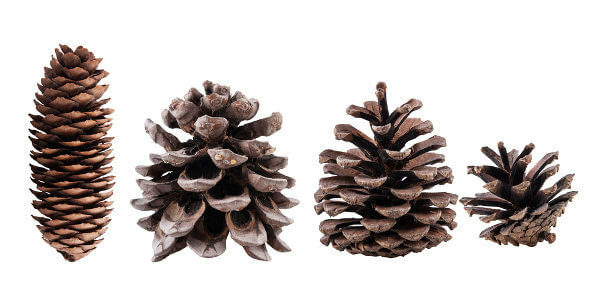
The strobiles, also called cones, are structures related to the production of spores.
Read too:Pollinators
As they are vascular plants, gymnosperms stand out for their
presence of xylem and also phloem. The body of these plants is organized in root, stem and leaves, it is important to highlight that in many species there is growth in thickness (secondary growth).→ Seed
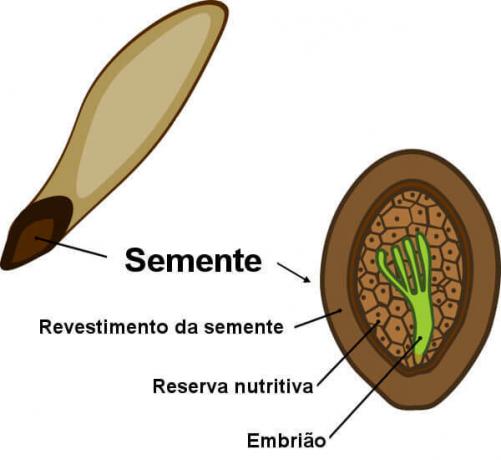
Look at the main parts of the seed.
The emergence of seed, without a doubt, it was essential for the evascular plant evolution. This structure is formed from the development of the egg and, in gymnosperms, it is not surrounded by fruit. All seeds are made up of three basic parts: the embryo, the nutritional reserve and a wrapping. The main functions of the seed are: to protect the embryo and guarantee the plant's dispersion.
Read too: seed dispersers
→ Gymnosperm life cycle
The life cycle of gymnosperms is more complex than that observed in bryophytes and pteridophytes. In this group, in most of its representatives, the presence of flagellated male gametes, which require water for reproduction, is not observed, with the exception of cycads and ginkgo. In nasgymnosperms, it is observed the presence of pollen grains, who are responsible for ensuring that the male gametes reach the female gamete.
Here we will describe the life cycle of a pine tree, a typical species of gymnosperm. We will start the cycle from the adult plant, which is the sporophyte phase, the dominant phase in the life cycle of this group of plants. It is noteworthy that the cycle of this plant, as well as other plant species, has alternation of generations, in which we verified the alternation between a sporophyte (diploid, 2n) and a gametophyte (haploid, n) phase.
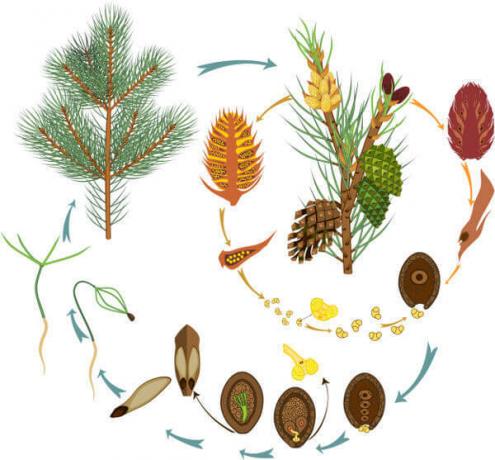
Above is a simplified scheme of the life cycle of a gymnosperm.
The pine sporophyte has structures called strobiles or cones, which have scales where their sporangia (structure where spores are produced). Two types of cones can be observed: some small producers of pollen (male strobiles) and some larger ones where the eggs (female strobiles).
It is common to see, in most gymnosperms, the male strobiles in the lower part of the tree and the female strobiles in the upper part, which makes it difficult for the plant to be pollinated by the pollen produced by itself.
The pollen-producing cones have cells called microsporocytes or microspore stem cells, who suffer meiosis and produce four microspores (spore that develops in the male gametophyte) haploids.
These microspores develop in the pollen grain. The pollen grain is formed by two cells protalar (which have no apparent function), a tube cell and a generator cell, being, at this stage, the immature microgametophyte (male gametophyte).
In the female cones, we find the eggs, which are formed by the multicellular nucleus or megasporangium (sporangium where megaspores are produced), which is surrounded by an integument that has an opening called a micropyle.
In each of the megasporangia, the presence of only megasporocyte or megaspore mother cell, which undergoes meiosis and forms the megaspore (spore that develops in the female gametophyte) haploid. Four megaspores are formed at the end of cell division, but only one of them is functional and develops into a megagametophyte (female gametophyte).
The pollen grains (partially developed microgametophyte) are released and blown away by the wind. This pollen grain can then reach the scale of a female cone. This transfer of the pollen grain is called pollination.
After pollination, the pollen grain is carried through substances produced in the scales, through the micropyle, to the megasporangium. It then germinates forming the pipepollen, which is responsible for transporting the male gamete to the oosphere. In megasporangium, meiosis has not yet occurred.
When we consider the pine tree, we can observe that, approximately one month after pollination, the megagametophyte is formed. The megagametophyte then develops and forms the archegons. This process is time-consuming and can be extended for more than a year in these plants.
The germinated pollen grain slowly makes its way, with the pollen tube growing through the tissue of the megasporangium to the megagametophyte, which is still developing. The pollen grain-generating cell forms a sterile cell and a spermatogenic cell, which divides to form the male gametes. At this stage, we say that the pollen grain is the mature microgametophyte.
The pollen tube reaches the oosphere and discharges the two male gametes into this female gamete. One of the nuclei of the male gamete fuses with the nucleus of the oosphere, and the other undergoes degeneration. Generally, in the megagametophyte of these plants, it is verified the formation of several archegones and, consequently, several oospheres.
With that, there is the fertilization of more than one oosphere and consequently the beginning of the formation of several embryos inside a single egg. This phenomenon is called polyembryony. It is noteworthy, however, that, despite polyembryony occurring, generally, only one embryo survives.
After fertilization, each egg develops into seed. The seed falls to the ground and, if it finds a suitable environment, it germinates, giving rise to a new sporophyte.
Read too: pollen grain
→ Classification of gymnosperms
Currently, the presence of four gymnosperm phyla with living representatives is observed. Are they:

Pines are part of the conifer group.
coniferophyta: without a doubt the largest group of gymnosperms. In it, we find the famous conifers. As an example of conifer, we have the pine and redwood trees. In this phylum, we find more than 600 different species.

Cycads are plants used in ornamentation.
Cycadophyta: group with flagellated gametes. Another striking feature is that in the cycads we have plants with leaves that resemble palm trees. As an example of cycad, we can mention the cycads.
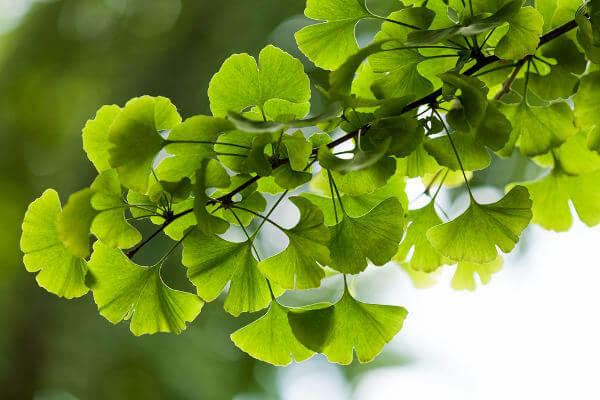
Note the typical format of cells from Ginkgo biloba.
Ginkgophyta: group that has only one living species which is the Ginkgo biloba. In these plants, the presence of flagellated male gametophyte is also observed. The leaves of this plant resemble a fan.
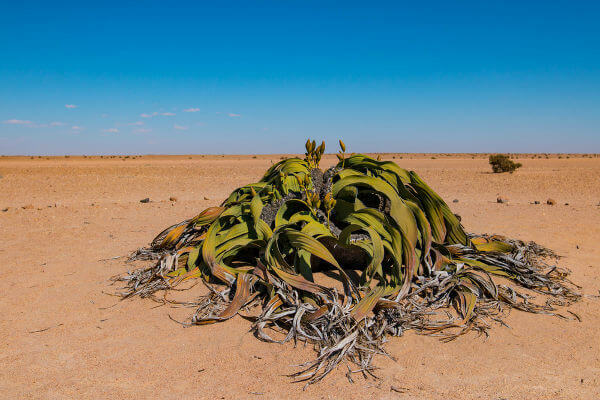
The Welwitschia is a plant found in the deserts of Africa.
Gnetophyta: group that has three phyla (Welwitschia, Gnetum and Ephedra). In these three genera, we find characteristics that approximate them to angiosperms, such as cones, which are very similar to inflorescences.
By Ma. Vanessa Sardinha dos Santos


